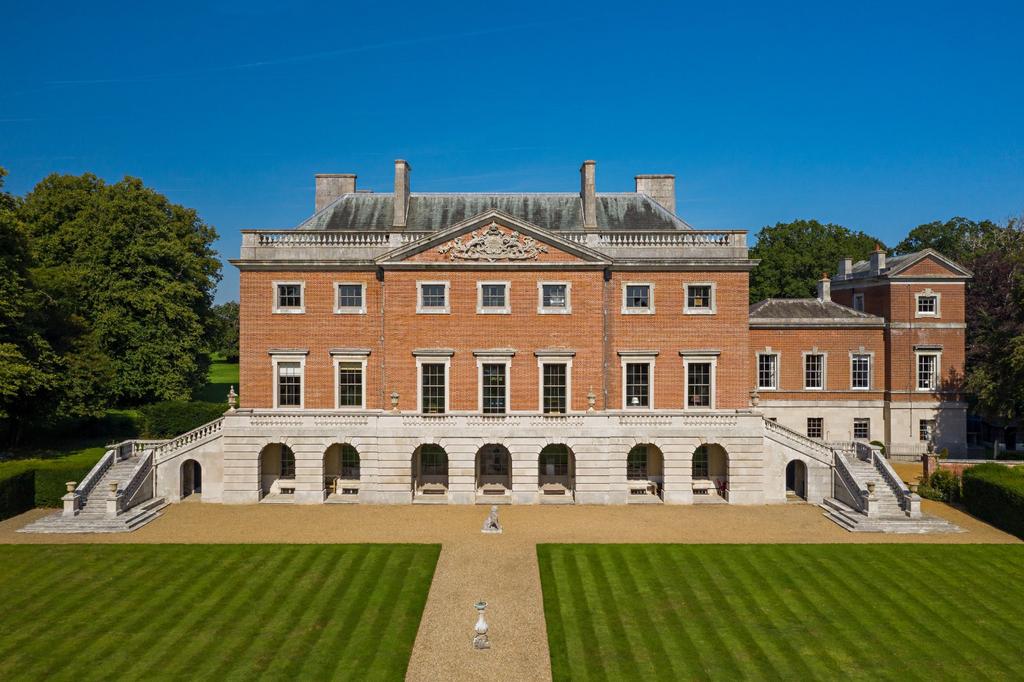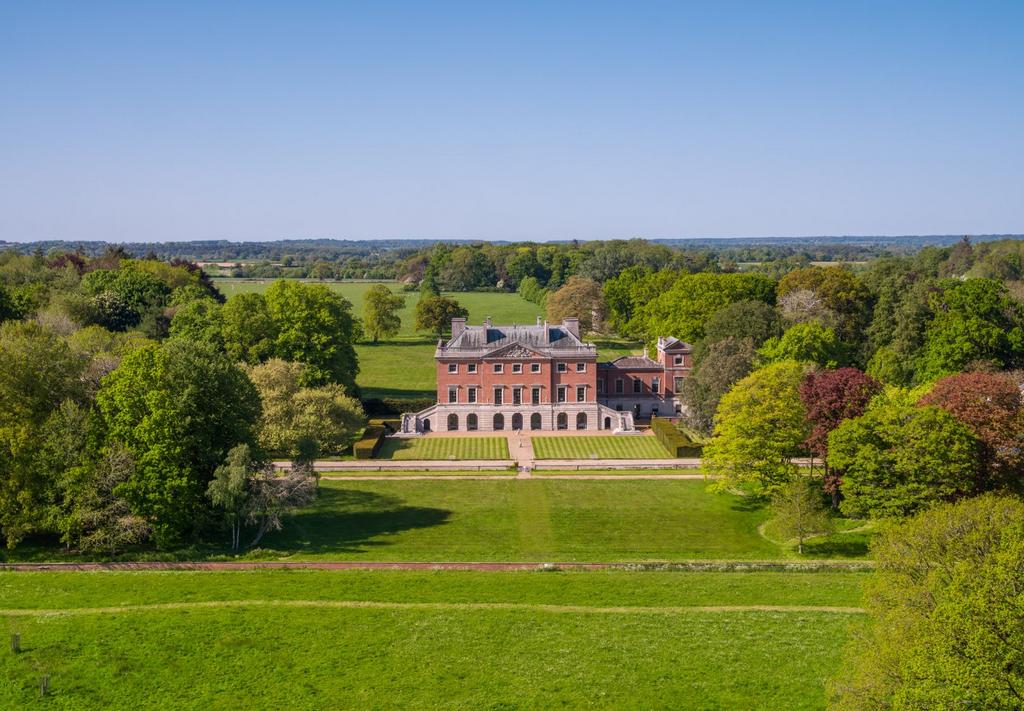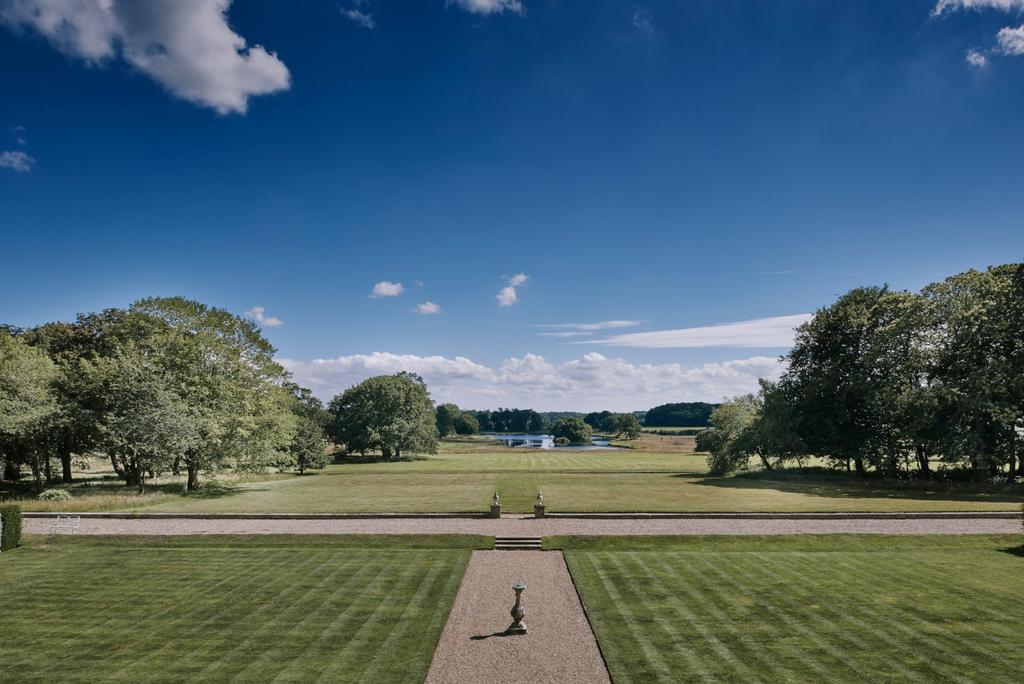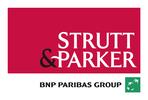This property is no longer on the market



19 bedroom house
Key information
Property description & features
- Tenure: Freehold
- Award Winning Restored Stately Home
- 458 acres
- 7 additional properties
- Outbuildings
- Parkland
- Walled Gardens
- Lake
- Complete privacy and seclusion
- No footpaths
The Walpoles were once one of the most powerful aristocratic families in England and Horatio Walpole was the brother of Sir Robert Walpole, Britain’s first prime minister who built Houghton Hall simultaneously with Wolterton. Horatio Walpole had a successful political career himself, and he entered Parliament in 1702 remaining a member for 54 years. He was Britain’s ambassador and was influential in maintaining friendly relations with France, and had a particularly fruitful relationship with Cardinal Fleury, First Minister to Louis XV. He married Mary Magdalen Lombard in 1720 with whom he had eight children. The second Lord Walpole was godfather to Horatio Nelson, one of Norfolk and England’s most famous sons and widely regarded as one of the greatest naval commanders in history. Nelson was a regular visitor to Wolterton Hall, and the bedroom in which he regularly stayed is named after him.
In about 1828 George Repton, son of Humphrey, was commissioned to add a wing to the house, now known as the East Wing along with a spectacular terrace and balcony along the garden front with open arcading and open staircases. This balcony is larger than Buckingham Palace’s and provides a sensational view over the garden, park and lake to the south. The estate and house remained in the Walpole family until 2016, when the current owners bought it privately after a thirty year period when it was unoccupied and therefore this is the first time that Wolterton has come to the open market in its history. The current owners, the design partnership, Peter Sheppard and Keith Day have sensitively restored the Hall and estate resulting in winning both the 2022 Georgian Award and Historic Houses Association Award for restoration.
Horatio Walpole, 1st Lord Walpole of Wolterton acquired the manor house and estate at Wolterton in 1722 which he decided to renovate. Horatio’s plans for the estate were jeopardised in 1724 when a fire swept the house destroying the structure. The architect to the king, Thomas Ripley was engaged to advise Walpole on the rebuild required. Responsibility for the design and construction of the new Hall was given to Thomas Ripley.
He had also been engaged by Horatio’s brother Sir Robert Walpole to re-develop Houghton Hall. His design was for a neoclassical country house with a rectangular plan over five storeys, inspired by Andrea Palladio who is considered to be one of the most influential architects in history. The ground floor was faced with Portland stone with the upper storeys faced in pale red brick which were produced locally. Sash windows were installed surrounded by eared and shouldered stone architraves. The window heads were of plain stone pediments with cornice. The main entrance, which was on the north elevation of the house, was flanked either side with Tuscan columns and headed with a plain stone cornice and pediment and was accessed by means of a huge baroque exterior staircase which was removed in the 19th century.
There is potential to reinstate this waterfall staircase, and there are drawings of it in the archive room at the Hall. This former entrance on the first floor is now a window following alterations made in the 19th century.
The roof is constructed of Welsh slate. Alter ations and additions Horatio Walpole, 3rd Earl of Orford the great-grandson of Horatio Walpole inherited the Hall and he initiated many alterations to it. In 1828 Horatio commissioned the architect George Repton, who was the fourth son of Humphry Repton the landscape designer, to build a new Palladian wing on the east elevation of the Hall. This consisted of a two-storey four bay link to a fifth three storey bay creating a pedimented Palladian pavilion. He also added the Portland stone arcade to the south elevation which consisted of seven semi-circular arches with a balustrade terrace balcony above. At each end of the arcade he constructed an open staircase which lead from the terrace down to the gardens below.
The Walpoles remained in residence at Wolterton until the death of Horatio Walpole, 3rd Earl of Orford in 1858. The 4th Earl also called Horatio went to live at near-by Mannington Hall and Wolterton remained empty until the 1900s. In 1905 restoration work began at the instigation of Robert Horace Walpole, 5th Earl of Orford, who was the nephew of the 4th Earl. He moved back into Wolterton from Mannington and remained there until he died in 1931. Having no heir, the 5th Earl left the house and estate to another member of the Walpole family, Robert Henry Walpole, who became both the 7th Baron Walpole of Wolterton and 9th Baron Walpole of Walpole, he was descended from Thomas Walpole, the 2nd son of the 1st Lord Walpole of Wolterton. The 7th/9th Baron opened the house up to visits from the general public in 1950.
Disaster struck in 1952 when a fire broke out in one of the bedrooms on the attic floor, gutting the whole floor and causing serious water damage to the room below after the fire brigade had successfully put out the fire. The fire brigade, estate workers, neighbours and a group of boys from Old Buckenham Hall preparatory school all worked together to save much of the house’s contents, with the fire brigade noted for their courage in retrieving many priceless works of art and furniture from the less accessible area engulfed in the fire. Lord Walpole began the restoration of the Hall soon after the fire and after three years the Hall was back to its original condition and back open to the public.
In 1989 the Hall and estate were inherited by his son the 8th/10th Baron Walpole and in 2016 the estate was bought privately by Peter Sheppard and Keith Day.
The interior designs for the Hall are spectacular especially the eight grand double height State rooms which comprise the piano nobile. The Marble Hall was formally the entrance hall before Repton’s removal of the baroque staircase to the entrance in 1828. It is an impressive but understated hall, similar to the ones at Houghton and Raynham Hall. The room has four walnut doors which were a gift of Queen Caroline the wife of George II which like most of the state rooms has fireplaces made by Richard Fisher of York. The room has a classical motif stucco ceiling, a Derbyshire marble floor and views over the northern lawns and park, through the landing and Saloon to the lake beyond. Two doors lead off the Marble Hall to two spectacular lavatories, said to be the finest in Norfolk!
The Saloon is accessed from the stairwell, Boudoir and Picture room. It is the largest and most magnificent room in the house, which like the Marble Hall has even higher ceilings than the other state rooms. The entire room is hung with a slate coloured linen and has three full height sash windows which disappear into ingenious pockets allowing people to walk out on the balcony without needing to stoop and lead to the spectacular south facing balcony which is much larger than that on Buckingham Palace. From here the true majesty of the setting comes into focus and the view has been described as one of the finest landscape views in Norfolk. The cornicing and plasterwork is of particular note, as is the fireplace, which is one of Fisher’s best.
The North Drawing Room has exposed original panelling and a fine crisply carved white marble fireplace in perfect condition. The State Dining Room is covered in a scarlet wool damask as used at Strawberry Hill, built by Horatio’s nephew, Horace Walpole. The fireplace by Fisher has a motif of the Saracen’s Head, which the Walpoles were allowed to use on their coat of arms as their ancestors had fought in the crusades. The Venetian room is so called because of the vast and magnificent Palladian window which covers the entire west wall. The fireplace has a carving of a woman’s head rumoured to be a portrait of the wife of Horatio Walpole. The Boudoir is the first of three room which would have been used as a suite for an important guest such as the king or an important aristocrat. It has a particularly fine fireplace in marble, veined in viridian and violet with a swag of acorns and oak leaves.
The State Bedroom is an almost cubic room and being east facing benefits from morning sunshine. It has three jib (secret) doors, one which leads on to the home staircase, one to its own ‘night loo’ and another to a cupboard previously used as a closet. The walls are hung with linen printed with a design by Bodley.
The State Bathroom has a free standing alabaster bath, champagne fridge and adjacent shower room with a working fireplace in black and white marble. This contains a rain shower which is recessed into the ceiling, resulting in a waterfall of around 18 feet. Heating has been installed behind the marble slabs.
The house has a central domed full height stairwell with a stone cantilevered staircase with a lyreshaped wrought iron balustrade topped with a banded rosewood handrail. The landing is particularly spectacular being double height with windows on to the en-suite bathrooms and attic windows above. It has the feel of a Roman courtyard and the roof light gives light to the interior of the house. In addition, there is a second cantilevered stone staircase with another roof light and a lift. All the rooms on the piano nobile have been restored with particular care for what is correct for the period.
The house is entered through the main door to the north facade on to the arcade, a vaulted entrance hall which leads on to the boot room which is hung with a hand blocked wallpaper designed by Augustus Pugin and which is used in the Houses of Parliament. A cabinet style corridor leads on to the magnificent library, containing the Walpole books and built probably about 1820. It contains two secret cocktail cabinets and a door into a cupboard with a safe and has an air of tranquillity and comfort about it. The walls have Watts’ ‘Cassius’ wallpaper in a colour and design which complement the mahogany bookshelves. The sash windows, like those in the saloon rise into pockets and have ingenious lower apron doors which open on to the stone colonnade. This leads on to the Picture Room which currently serves as an office for the owners and has windows overlooking both the lake and the west gardens. The East Hall, which is inspired by the Sir John Soane museum is entered through the side door to the house. It leads directly to the fully equipped and stylish Smallbone kitchen fully equipped with Gaggenau appliances which was the joint winner of the 2020 Historic Houses kitchen award. Also on the ground floor is the Butler’s kitchen, which is ideal for outside caterers, and the flower and china room which has access to the silver safe. along with the estate office, and two offices, both of which have fireplaces and Georgian features.
One of the glories of Wolterton is the double height landing at the top of the main staircase. This forms an internal Roman style courtyard with windows in the style of William Kent and floods the whole area and staircase with daylight. From this courtyard there are 11 bedrooms, all of which have their own superbly finished and unique bath and shower rooms. Each bedroom has its own style and is named, as per the floorplan, and each has a wonderful view over the surrounding grounds. Most rooms have their original marble fireplaces with Georgian hob grates.
Wolterton has substantial cellars, which cover the entire footprint of the main house and include a large laundry, boiler room, and numerous store rooms, each with a function. There are also separate cellars for red wine and port and white wine and champagne. There is also a cinema room and a connecting door to the East Wing, and a tunnel, which leads to the stable block and was used originally to transport the owner’s and guest’s luggage from the stable block to the house.
The East Wing
This was designed and built in the Regency period by George Repton in 1828 and can either be separated or incorporated into the main house. It has its own large and well equipped kitchen with an Aga and large Smallbone Brasserie oak kitchen along with a fine drawing room, dining/billiard room and 7 bedrooms and 5 bathrooms. There are some splendid fireplaces and period features along with excellent ceiling heights and stunning views over the gardens, grounds and parkland.
The Hall sits centrally in 458 acres which is predominantly parkland and gardens which were designed and built by the garden designer Charles Bridgeman in the early eighteenth century. His design also included the creation of the lake, from an earlier water feature, in 1725 to the south of the Hall. The lake was enhanced in 1830s with the addition of an island which was planted with cedar trees. The view from the south-facing balcony of the Hall looks over the lake and is said to be ‘one of the finest in England.’ Wolterton Hall is approached through the refurbished original 18th century gates which have been electrified and lead to a ½ mile tarmac driveway which threads through a glorious and generous avenue of mature beech trees, creating a dramatic sense of arrival, and ever increasing privacy, seclusion and tranquillity. The driveway heads through another set of gate posts and then splits with one branch heading to a large parking area adjacent to the north façade, and the other branch heading to some of the cottages, and the stable yard.
The gardens are predominantly laid to lawn, with large areas to the north and south of the Hall, both of which are bordered by two recently restored ha-ha’s. To the northwest of the house is the Pleasure Ground Plantation, which was used for strolling and enjoyment. There is also the delightful west-facing lawn with a collection of important trees including a London plane, handkerchief tree and a magnolia which along with other trees form an avenue overlooking the extensive parkland beyond. The west end steps lead down to another garden level which was formally a rose garden with rotunda, which are the remains of work by Gilpin. There are some wonderful trees and woodlands at Wolterton, and much work has been carried out by the current owners to manage these involving the substantial removal of shrubs including magnolias, holly, laurels which has resulted in a greatly improved vista of the lake and parkland.
The substantial walled kitchen gardens at Wolterton are one of the largest early eighteenth century walled gardens in Norfolk and are a particular highlight. There are fruit trees including: nectarine, apricot, apple, pear, plum and almond. The walled gardens have been professionally restored and there are beds containing a wide variety of vegetables including: artichokes, asparagus, broad beans, mange tout, potatoes, peppers, tomatoes and leeks to name but a few. There are also beds containing herbs and lots of cut flowers. Due to the scale of the walled gardens, there are tucked away sheltered areas which would be ideal for a tennis court and a swimming pool, subject to the necessary consents.
Estate Yard
To the north-west of the estate lies the Estate Yard. This is a range of mainly redundant traditional buildings which have significant scope for development to either residential or commercial units. There is a separate access to the highway via the rear drive. There is a sheep/livestock building which is used by the grazing tenant and some paddocks which could become gardens to the dwelling, subject to planning permission being granted. The owners are in discussion with the relevant authorities to create a number of other residential properties.
Estate Buildings
To the east of the Hall is a range of more modern buildings which are used to store machinery, wood and estate management equipment. There is an area of concrete and hardstanding surrounding these. There are also further outbuildings including former piggeries and kennelling which have scope for further development subject to the necessary consents.
Viewing
Strictly by confirmed appointment with the vendor’s agent, Strutt & Parker in Norfolk[use Contact Agent Button] or London[use Contact Agent Button].
The Wolterton Park Estate is situated in glorious unspoilt rolling North Norfolk countryside where there are no dual carriageways or noisy trainlines and it isn’t on the flight line of a commercial airport. The estate is however only 12 miles from the superb Norwich International Airport which has a variety of domestic and international flights, and a very useful direct connection to Schiphol Amsterdam which connects to most major worldwide destinations. A private jet company also operates from Norwich airport, and more information is available from the agent. Norwich railway station offers a regular direct service to London Liverpool Street with a journey time of about 1h 40 minutes and to Cambridge with a journey time of 1h 15mins. Wolterton is located near the charming village of Itteringham which has a well-stocked community run village shop and the Walpole Arms pub. About 300m from the end of the main drive is the delightful Saracens Head pub which is a traditional coaching inn with a very good reputation for food.
The fine Georgian market towns of Aylsham (4 miles) and Holt (7 miles) are both charming and offer good quality local amenities and independent shops along with supermarkets. Norwich, the regional centre offers a comprehensive range of amenities and is one of the UK’s only Unesco cities of literature. There is a superb Theatre, and a wealth of independent shops along with excellent schooling. Holt also contains Gresham’s School which caters for boys and girls of all ages, and Beeston Hall Prep School is on the coast at West Runton which is about 7 miles.
The North Norfolk Coast offers first class recreational opportunities including sailing and golf along with bird watching and walking combined with some superb restaurants and pubs, including the Michelin starred Morston Hall along with many others. Burnham Market, Blakeney, Holkham, Cley and Brancaster are all within easy reach and have genuine charm and interest.
Property information from this agent
Places of interest
See more properties like this:
*DISCLAIMER
Property reference NOR210013. The information displayed about this property comprises a property advertisement. OnTheMarket.com makes no warranty as to the accuracy or completeness of the advertisement or any linked or associated information, and OnTheMarket.com has no control over the content provided by the agent or developer. This property advertisement does not constitute property particulars. The information is provided and maintained by Strutt & Parker - Norwich.
OnTheMarket may have applied supplementary data to this property listing, including:
Broadband availability and predicted speed: obtained from Ofcom on June 15, 2023
Broadband speed is measured in megabits per second, with the number returned showing how fast the connection is. Each reading is based on the highest predicted speed of any major broadband network for services that deliver the download speeds. The following are the different readings that we may display:
Basic: Up to 30 Mbit/s
Super-fast: Between 30 Mbit/s and 300 Mbit/s
Ultra-fast: Over 300 Mbit/s
The data is updated three times a year. The checker results are predictions and should not be regarded as guaranteed. For more information, see: https://checker.ofcom.org.uk/en-gb/about-checker#Answer_0_2
Mobile phone signal availability and predicted strength: obtained from Ofcom on June 15, 2023
Mobile signal predictions are provided by the four UK mobile network operators: EE, O2, Three and Vodafone. Predictions can vary significantly from the coverage you may actually experience as a result of local factors (especially terrain). Ofcom has tested the actual coverage provided in various locations around the UK to help ensure that these predictions are reasonable. The values shown against a property can be broken down as follows:
Clear: No bars, no signal predicted
Red: One bar, reliable signal unlikely
Amber: Two bars, may experience problems with connectivity
Green: Three bars, likely to have good coverage and receive a data rate to support basic web services
Enhanced: Full bars, likely to have good coverage indoors and to receive an enhanced data rate to support multimedia services
Energy Performance data and Internal floor area
Any supplementary data should not be relied upon as forming part of any property particulars and OnTheMarket cannot be held responsible for any incorrectness in this data. See here for more information.
